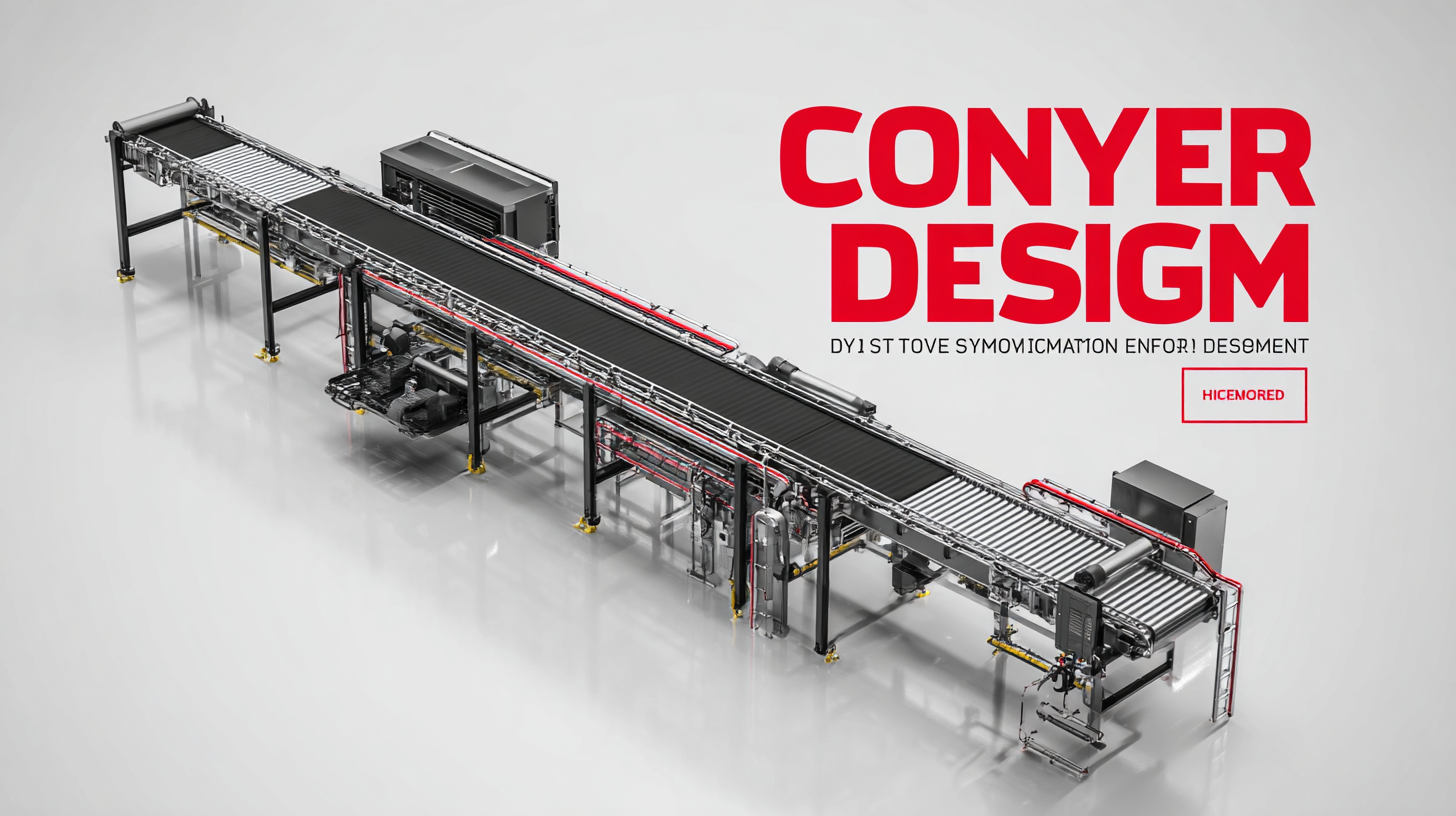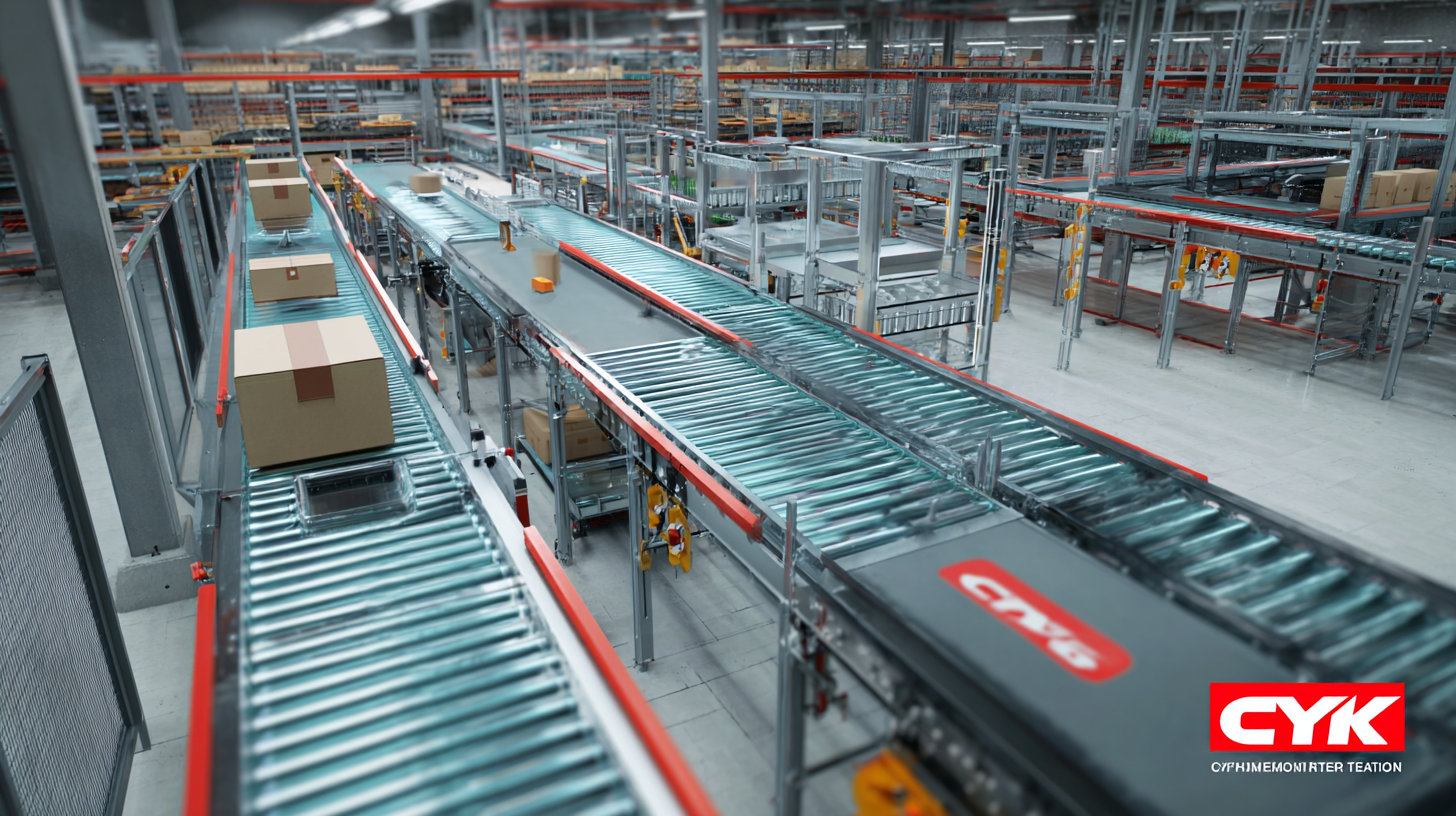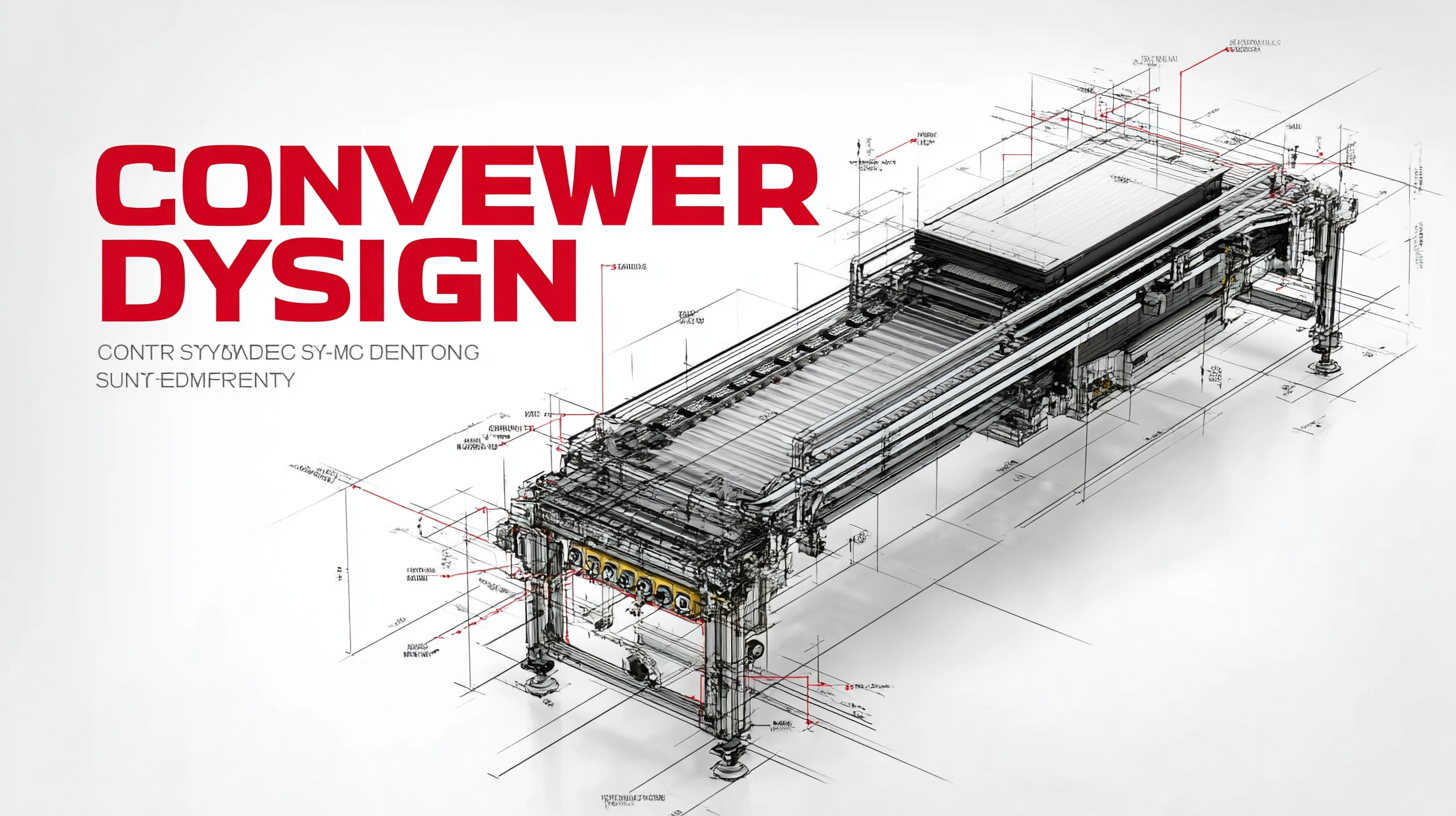In the rapidly evolving landscape of industrial operations, optimizing Conveyor System Design has become a pivotal focus for businesses aiming to enhance their efficiency and productivity. As we look toward the market analysis for 2025, it is clear that companies must adapt to emerging technologies and innovative practices to stay competitive. This blog will delve into the critical elements of Conveyor System Design, highlighting the latest trends and providing actionable tips to maximize performance. By understanding the intricacies of these systems and leveraging data-driven insights, organizations can achieve a streamlined workflow that not only meets today’s demands but also prepares them for future challenges. Join us as we explore how to strategically refine your conveyor system to not only meet but exceed efficiency standards in the coming years.

When optimizing a conveyor system design, it is crucial to accurately identify your system requirements and objectives. This starts with a thorough analysis of the operational environment, product types, and throughput demands. Recent advancements highlight the importance of integrating self-powered technologies, such as hybrid triboelectric-electromagnetic generators, which not only enhance efficiency but also support sustainability in off-grid applications. A well-designed conveyor should incorporate such innovations to minimize energy use while maximizing productivity.
Moreover, the role of predictive maintenance in conveyor systems cannot be overlooked. Utilizing artificial intelligence for monitoring systems leads to significant performance improvements. For instance, AI-supported systems have been effectively implemented in various industrial plants, enabling real-time tracking and maintenance optimization. According to industry reports, predictive maintenance can reduce downtime by up to 50%, making it a vital component in the design process. By strategically selecting motors that match specific application requirements and incorporating advanced monitoring systems, businesses can ensure that their conveyor designs are not only efficient but also resilient to operational challenges.
| Parameter | Description | Importance Level | Optimization Strategy |
|---|---|---|---|
| Throughput Capacity | Amount of material transported per unit time | High | Adjust speed and width to match material flow |
| Energy Efficiency | Energy consumed during operation | Medium | Implement energy-saving drives and motors |
| Maintenance Frequency | How often the system requires servicing | High | Choose durable materials and design for easy access |
| Safety Features | Mechanisms in place to ensure safe operation | Critical | Incorporate emergency stops and guards |
| Flexibility | Ability to handle different materials or product sizes | Medium | Design adjustable widths and modular systems |
When optimizing conveyor systems, the selection of the appropriate conveyor type is critical for achieving optimal performance. Different materials require different handling characteristics, making material testing an essential step in the selection process. Understanding the specific properties of the materials being transported—such as weight, size, and moisture content—can inform the choice of conveyor type, ultimately improving throughput and enhancing product quality.
Additionally, attention to detail in the design and operational parameters of the conveyor system can significantly impact its efficiency. Continuous assessment and adjustments based on thorough performance evaluations can lead to better energy management and increased sustainability in operations. As industries push for more energy-efficient solutions, operators must focus on integrating innovative designs that not only meet throughput requirements but also align with environmental standards, ensuring that their conveyor systems contribute positively to their overall operational goals.

In today's fast-paced industrial landscape, incorporating automation and technology into your conveyor system design is crucial for enhancing efficiency. Automated conveyors reduce the dependency on manual labor, minimize human error, and streamline operations. By integrating sensors and smart technologies, manufacturers can monitor the performance of conveyor systems in real-time, allowing for immediate adjustments that optimize throughput and maintain consistent product flow.
Moreover, employing advanced control systems and AI-driven analytics can significantly enhance decision-making processes. These technologies can identify bottlenecks and suggest operational improvements dynamically. Additionally, the integration of IoT (Internet of Things) devices allows for seamless communication between different components, ensuring that the entire assembly line operates harmoniously. As companies embrace these innovative solutions, they can expect a significant increase in overall efficiency while also reducing operational costs, making their conveyor systems not just a tool, but a vital asset in achieving their production goals.
Regular maintenance and timely upgrades are crucial in optimizing your conveyor system's efficiency and minimizing downtime. Establishing a routine inspection schedule allows you to identify and address potential issues before they escalate into costly failures. This includes checking for wear and tear on belts, pulleys, and motors, as well as cleaning and lubricating components to ensure smooth operation. Adopting a proactive maintenance approach helps you keep production running smoothly and enhances the lifespan of your equipment.
Investing in upgrades is equally important, as technology constantly evolves. Implementing modern controls or advanced monitoring systems can significantly improve your conveyor system’s performance. Upgrades like variable frequency drives can optimize motor operation and reduce energy consumption. Additionally, incorporating new materials or components can enhance performance and reliability, leading to less frequent breakdowns. By prioritizing both maintenance and upgrades, you will not only minimize downtime but also boost overall productivity, ensuring your conveyor system operates at its best.

Training your workforce is crucial for effective conveyor system management, as a well-informed team can significantly enhance overall efficiency. When employees understand how to operate and troubleshoot the conveyor system, downtime is minimized, and productivity is maximized.
**Tip:** Implement regular training sessions that cover both the basic and advanced functionalities of your conveyor system. Hands-on workshops can greatly enhance learning, allowing workers to gain practical experience. Regular assessments and refreshers can also help to keep skills sharp.
Moreover, fostering a culture of safety and awareness around conveyor operations is essential. Workers should be trained not just in operational procedures, but also in safety protocols to avert accidents and mechanical failures.
**Tip:** Encourage an open-door policy where workers feel comfortable reporting issues or suggesting improvements. Recognizing and rewarding proactive suggestions can boost morale and lead to innovative solutions for system optimization. Keeping communication channels clear can empower employees to take ownership of their roles in conveyor management.
